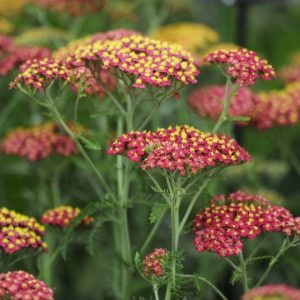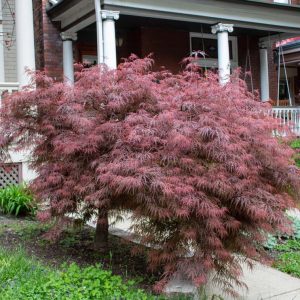Description
Anemone – Windflower
There are about 120 species of variable perennials and annuals from a wide range of habitats in temperate regions in the southern hemisphere, but most derive from the Northern hemisphere especially Asia, in this genus. These rhizomatous fleshly or fibrous rootstock bear ground-hugging plants divided into three main groups:
–Spring flowering species with tubers or rhizomes which are found in woodland and alpine pastures that can be divided in summer when dormant
–Spring or early summer flowering tuberous perennial thriving in hot dry summers like the Mediterranean and Central Asia and can be divided in summer when leaves have died down
–Late summer to autumn flowering herbaceous species with fibrous roots occurring in moist open woodland and grassy sites and can be divided in early spring or autumn.
Most bear both basal and stem leaves. The basal tuft leaves are rounded to oval 3-7 palmate or palmately lobed, with mid to dark green leaflets and lobes are often shallowly to deeply dissected or toothed and can be hairless or hairy. Smaller stalkless or short stalked stem leaves are often produced in groups of three or more arising from a single point beneath the flowers.
They bear starry or bowl or saucer shape flowers each with a central boss of stamens borne in cymes or umbels on branched or un-branched stems.
Cultivating Anemones have varying requirements: Grow in moist fertile humus rich soil in sun or partial shade
Given the right conditions and left undisturbed it will form wonderful carpets and some species can become invasive. Contact with sap may irritate skin
Prone to Synchytrium leaf galls, downy mildew, leaf and stem smut, Septoria leaf spot, powdery mildew, rust, nematodes, caterpillars, slugs and flea beetles.
Anemone hupehensis ‘Rosenschale’ – Anemone hupehensis ‘Pink Shell’ – Japanese Wind Flower – Chinese anemone – This vigorous, erect perennial from Western and Central China grows 24-36” tall and 16” wide. This semi-evergreen has a woody-based fibrous rootstock and suckering shoots. Long stalked rounded to oval 3 palmate dark green basal leaves 4-8” long and has smaller stem leaves are sharply toothed and are sparsely hairy on the undersides. From mid summer to autumn it bears branched stems that hold umbels of up to 15 white or pink flowers 2-2 ½” wide with 5-6 tepals that often overlap of dark rose-pink, the outer ones.
Zones 5-7





